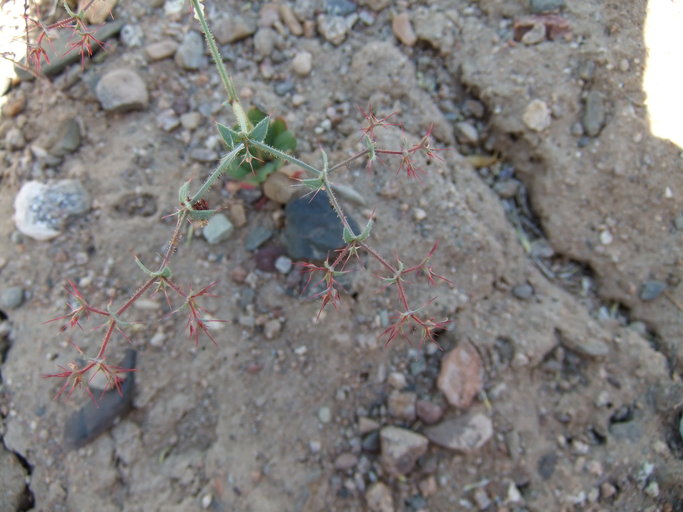Watson'S Oxytheca
(Oxytheca watsonii)

Description
Oxytheca watsonii Torrey & A. Gray, Proc. Amer. Acad. Arts. 8: 191. 1870., Plants erect to spreading, 0.5-2.5 - 0.4-4 dm. Stems glandular throughout. Leaf blades spatulate or obovate to oblanceolate, 0.7-4 - (0.1-)0.5-1.2 cm, strigose adaxially, less so abaxially, sparsely glandular on both surfaces. Inflorescences open to densely branched, 0.5-2 dm; bracts 1-5 - 0.5-3 mm, 3(-5) at first node and linear to ovate, otherwise distinct or basally connate and linear to triangular, ciliate and glandular; awns 1-3 mm. Peduncles deflexed, stout, 0.2-0.5 cm at proximal nodes, sometimes absent. Involucres 1.5-2 mm, typically glabrous, rarely with few scattered hairs abaxially; teeth 4; awns reddish, 2.5-3 mm. Flowers 2-4(-7); perianth white to pink, 1-1.5 mm, strigose and sparsely glandular abaxially; tepals dimorphic, entire, those of outer whorl oval to ovate and strigose abaxially, those of inner elliptic to oval or ovate and glabrous or sometimes pubescent adaxially at base; filaments 1-1.5 mm, glabrous; anthers cream to red, oval, 0.2 mm. Achenes dark brown to maroon, 1-1.5 mm. 2n = 40. Flowering Jun-Oct. Sandy flats and slopes, saltbush communities; 1200-2000 m; Calif., Nev. Oxytheca watsonii is an uncommon species known only from scattered locations. The name was misapplied in pre-1980 California floras to Acanthoscyphus parishii var. goodmaniana.
Taxonomic tree:







